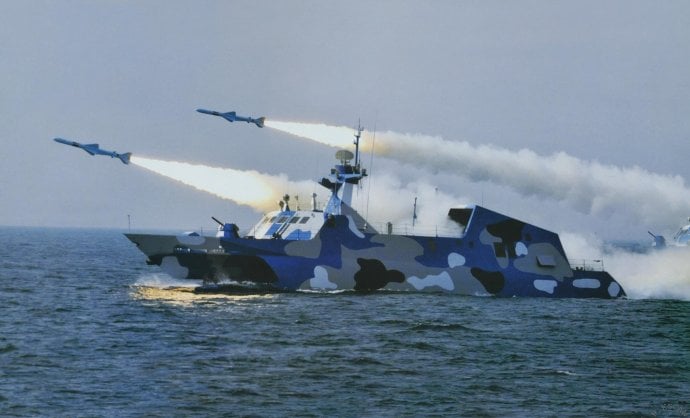
“Improved maritime strike capability has given Chinese warships a much greater chance of competing against their U.S. counterparts” and improved naval air defenses allow its warships “the ability to operate at increasingly great distances from shore”—major advances in large part speeded by arms, vessels and technology sales from Russia since the end of the Cold War.
Those were two observations contained in a new report from the Washington, D.C.-based think tank, the Center for Strategic and International Studies, released Tuesday. Paul Schwartz, the author of Russia’s Contribution to China’s Surface Warfare Capabilities: Feeding the Dragon, said in discussing the report, “collectively [those factors] represent a great leap forward” and “these systems [from new surface warships to sea- and air-launched anti-ship missiles, etc.] are making a real difference.”
He expects sales of technology and arms from Russia to China to continue into the future, especially in radar systems. Already the improved Chinese naval air defenses capabilities “complicate the task of U.S. pilots,” reminiscent of the difficulties the Americans faced in the Vietnam War.
For Russia, the sales amounted to $32.1 billion for 1999–2014 and helped keep it afloat as the Soviet Union collapsed. For the Chinese, they provided an opening to military technology that had been shut off following the Tiananmen Square massacre.
The transfers are not simply going from Russia to China. Schwartz added China has tried to interest the Russians in buying its latest frigate because of Russia’s shipbuilding problems. Beijing also has advanced drones, better information technology and command and control systems that could be of interest to Moscow.
Jeffery Mankoff, director of the CSIS’s Russia and Eurasia program, noted that Russia has also been selling modernized naval and air systems to Vietnam and India, neighboring rivals of China.
In the discussion that followed Schwartz’s presentation, Thomas Karako, a senior fellow at CSIS said, in anti-access/area denial (A2/AD) “China is using mass to challenge us”—allowing it to target fleet, allies and bases. “The U.S. is going to have to invest more in standoff weapons and penetration weapons,” as well as maritime missile defense against new conventional threats.
While directed energy and rail guns offer promise for the future, Karako quoted Adm. Bill Gortney, Northern Command commander, as saying for the immediate future it will still be missiles shooting down other missiles.
The unanswered question is whether the relationship between China and Russia is really a long-term one, or a marriage of convenience, said Zach Cooper, a fellow at the CSIS.
“Both counties are dissatisfied with the status quo”—Russia in Eastern Europe and China in the islands off its coast. Both “are using a similar technique of hybrid warfare” to get their way, stopping short of provoking a wider conflict that would draw in the United States. He cited the Chinese sending its coast guard vessels, rather than warships, into disputed waters as an example of this.
But the two nations do not always see eye-to-eye on Russia’s role in the Far East, Chinese hard-bargaining on energy sales from Russia, or Beijing’s reverse-engineering of technology sold to it rather than buying more. The report said of the reverse engineering, “Insult was added to injury when China began to sell some of those systems on the arms export markets, thereby undercutting Russian exports of the original system.”
For now, because of economic sanctions against Russia for its actions in annexing Crimea and backing separatists in eastern Ukraine, Moscow is further and further removed from interacting with the West.
Schwartz said, “China is still very integrated with the West,” economically.
Even with all China’s investment in maritime capabilities, Cooper and Schwartz predicted, it would take a decade or two to field a capable force to counter the United States at sea. China is only now fielding an aircraft carrier, which will be primarily used for training, although it plans on building three in the future. It also does not have a recent maritime history comparable to the United States and Japan so that means developing an officer corps knowledgeable about blue-water operations, a professional noncommissioned officer corps and ending its reliance on the draft to meet manpower needs.
Right now, “Russia is selling China the rope to hang the U.S. Navy,” Karako said.
Other important future large sales could include Russia’s S-400 air defense system, Su-35 aircraft and LADA-class diesel-electric submarines.
The report concluded: “Prospects for increased arms sales from Russia to China seem greater now than they have been in many years, and not solely in the maritime domain.”





